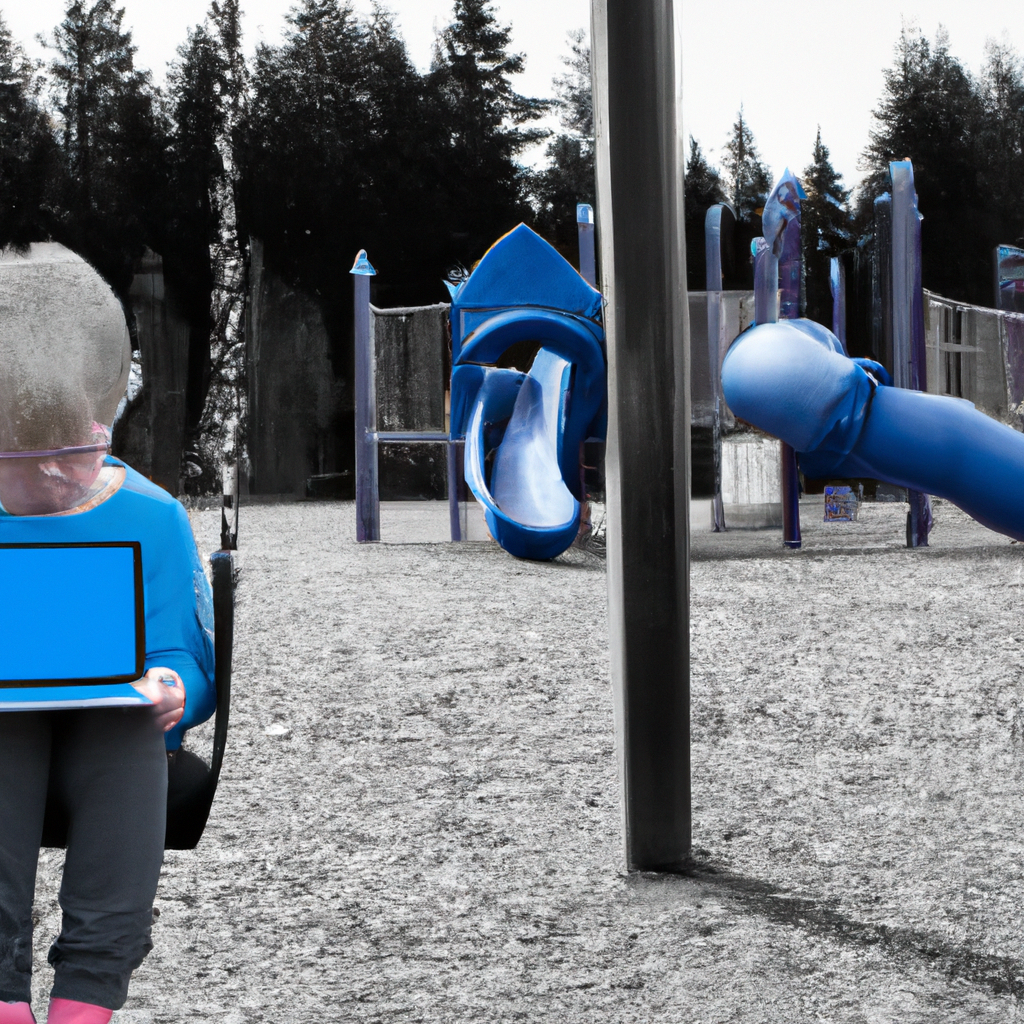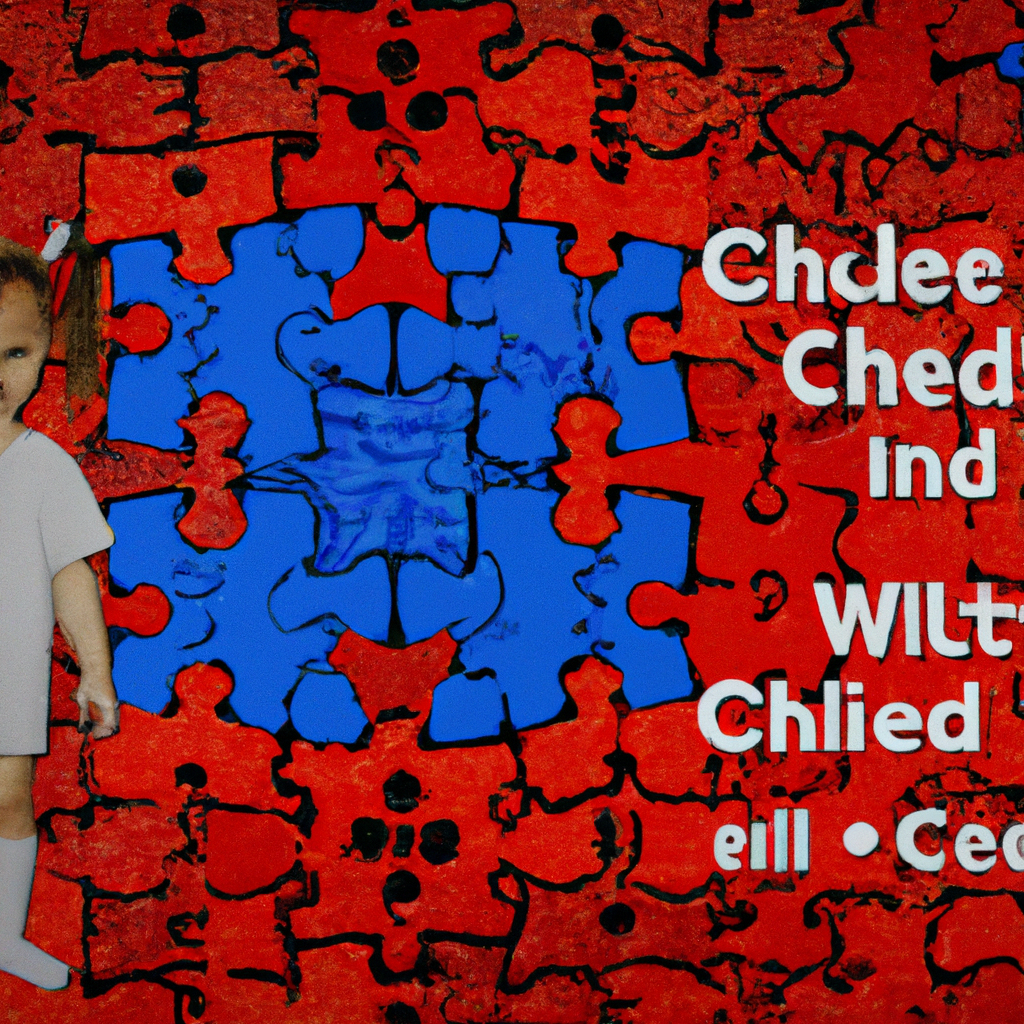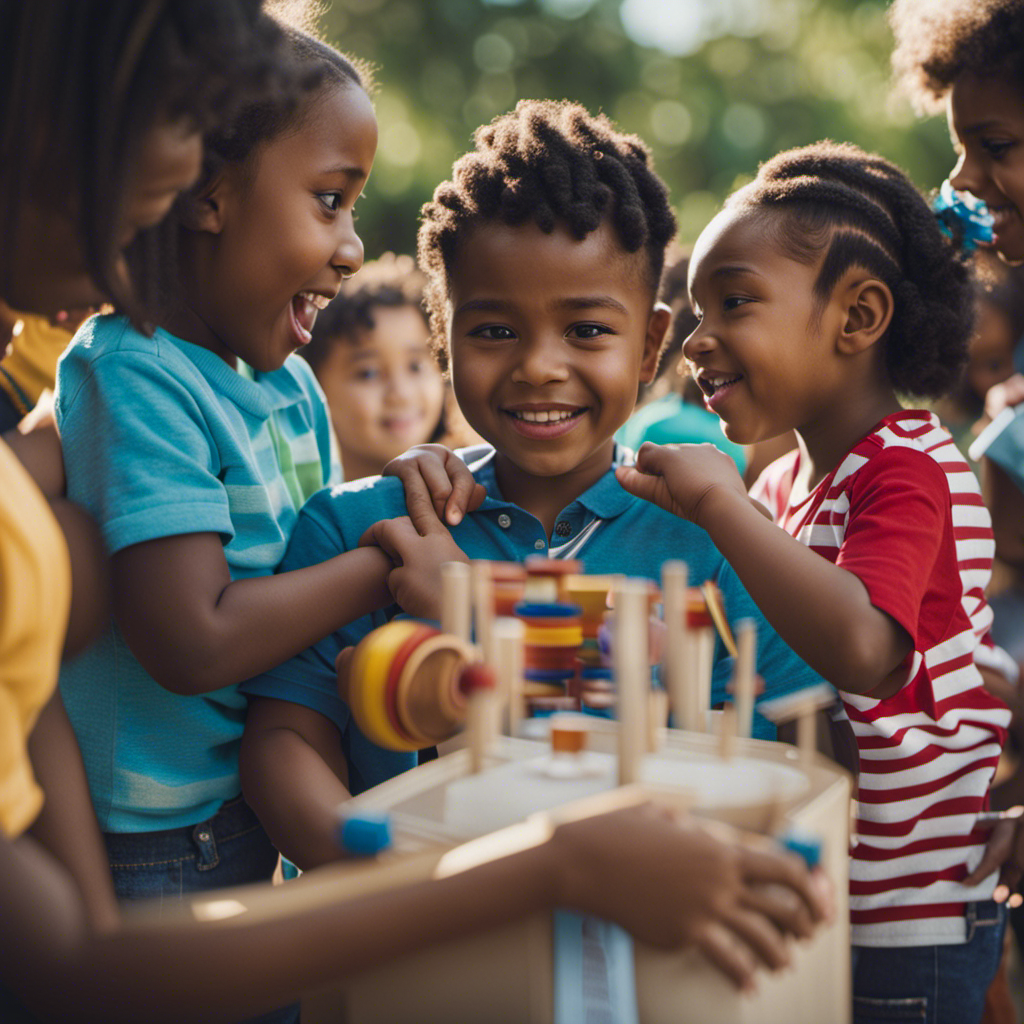Have you ever wondered what the term “theory” means in the context of child development? Let me clarify it for you.
Theories play a crucial role in understanding how children grow, learn, and develop. They provide a framework for researchers and practitioners to make sense of the complex nature of child development.
In this article, we will explore the importance of theories, their historical perspectives, and the key frameworks that shape our understanding of child development.
Get ready to dive into the fascinating world of child development theories!
Key Takeaways
- Theories in child development provide frameworks to understand complex growth and learning processes.
- Historical perspectives show how societal and cultural contexts influence the development of theories in child development.
- Key theories by Piaget, Freud, Erikson, Vygotsky, and Bronfenbrenner offer valuable insights into child development processes.
- The interplay between nature (genetics) and nurture (environmental factors) is crucial in child development, including the influence of parenting styles.
The Importance of Theories in Child Development
You need to understand the importance of theories in child development. Theories serve as frameworks that help us make sense of the complex processes that shape a child’s growth and development. They provide us with a deeper understanding of how children learn, think, and behave.
One important aspect of child development that theories explore is the role of parents. Parents play a crucial role in shaping a child’s development, providing guidance, support, and nurturing. Theories help us understand the different parenting styles, such as authoritative, authoritarian, permissive, and neglectful, and how they can impact a child’s overall well-being.
Cultural influences also play a significant role in child development, and theories help us understand how cultural factors shape a child’s experiences and development. Culture influences a child’s beliefs, values, and behaviors, and theories provide insight into how these cultural influences interact with other factors, such as genetics and environment, to shape a child’s development. For example, cultural norms regarding discipline, education, and gender roles can have a profound impact on a child’s development.
Understanding the role of parents and cultural influences is just the beginning when it comes to theories in child development. By exploring the historical perspectives on theories in child development, we can gain a deeper appreciation for the evolution of our understanding and the diverse approaches that have shaped this field.
Historical Perspectives on Theories in Child Development
When exploring the historical perspectives on theories in child development, it is important to delve into the key theories that have shaped our understanding of this field. These theories, such as Piaget’s cognitive development theory and Freud’s psychoanalytic theory, have provided invaluable insights into how children grow, learn, and develop.
Additionally, understanding the impact of historical perspectives on these theories allows us to see how societal and cultural contexts have influenced our understanding of child development over time.
Key Theories Explained
To understand key theories in child development, it’s important to explore the different perspectives and explanations that experts have put forth.
There are several key theorists in the field of child development who have proposed various theoretical perspectives to help us understand how children grow and develop.
One such theorist is Jean Piaget, who introduced the cognitive development theory, suggesting that children actively construct knowledge through their interactions with the environment.
Another important theorist is Erik Erikson, who focused on psychosocial development and proposed that individuals go through eight stages of development, each characterized by a unique psychosocial crisis.
Other notable theorists include Lev Vygotsky, who emphasized the role of social interaction in cognitive development, and Urie Bronfenbrenner, who developed the ecological systems theory to explain how various environmental systems influence a child’s development.
These key theorists and their theoretical perspectives provide valuable insights into the complex process of child development. Understanding these theories helps us gain a deeper understanding of how children grow and develop and can inform our approaches to nurturing and supporting their development.
Moving forward, it is important to consider the impact of historical perspectives on these key theories.
Impact of Historical Perspectives
Understanding the impact of historical perspectives is crucial in gaining insights into the theories and perspectives that have shaped our understanding of child development. The influence of cultural perspectives and the evolution of theories in child development have played a significant role in shaping our understanding of how children grow and develop. These perspectives have evolved over time, reflecting changes in societal values, beliefs, and cultural norms. To illustrate the evolution of theories, consider the following table:
| Theory Name | Key Contributors | Main Concepts |
|---|---|---|
| Behaviorism | John Watson | Observable behavior |
| Cognitive | Jean Piaget | Mental processes |
| Sociocultural | Lev Vygotsky | Cultural and social interactions |
| Attachment | John Bowlby | Emotional bonds |
| Ecological | Urie Bronfenbrenner | Environmental influences |
As we examine these theories, we can see how different historical perspectives have influenced our understanding of child development. This understanding sets the stage for exploring the role of nature vs. nurture in child development theories.
The Role of Nature Vs. Nurture in Child Development Theories
When it comes to child development theories, the debate between nature and nurture is a key aspect. The balance between these two factors plays a crucial role in shaping a child’s development.
Understanding the impact of nature versus nurture and exploring different theoretical perspectives can provide valuable insights into how children grow and develop.
Nature Vs. Nurture Balance
The nature vs. nurture balance is a topic of ongoing debate in the field of child development. Both genetics and environmental factors play a crucial role in understanding the development of a child.
Parenting styles, influenced by a combination of cultural, social, and personal factors, can significantly impact a child’s development. Research suggests that authoritative parenting, characterized by warmth, support, and clear boundaries, tends to promote positive outcomes for children. On the other hand, authoritarian or permissive parenting styles may have negative consequences.
Genetics also influence various aspects of a child’s development, such as temperament and cognitive abilities. Understanding the interplay between nature and nurture is essential in comprehending how children grow and develop.
This balance has a significant impact on child development, shaping their behavior, personality, and overall well-being.
Impact on Child Development
Cultural, social, and personal factors influence parenting styles, which can significantly impact a child’s development. The role of parents in shaping a child’s development cannot be overstated. Here are four key ways in which cultural influences play a crucial role in parenting:
-
Cultural values: Different cultures have varying beliefs and values about child-rearing, which shape the parenting practices within those cultures.
-
Parental expectations: Cultural norms and expectations influence what parents aspire for their children, such as academic success or adherence to traditional values.
-
Parenting styles: Cultural values and beliefs also shape the overall approach to parenting, whether it is authoritative, permissive, or authoritarian.
-
Social support: Cultural communities often provide social support networks for parents, which can influence their parenting decisions and practices.
Understanding the impact of cultural influences on parenting is essential for comprehending the diverse ways in which children are raised.
Transitioning into the next section, let’s explore the different theoretical perspectives that shed light on child development.
Different Theoretical Perspectives
To gain a deeper understanding of how children grow and change, you should consider exploring different theoretical perspectives. These perspectives provide valuable insights into the various factors that influence child development and how they impact children’s growth and behavior.
By examining different theoretical perspectives, we can uncover the underlying principles and theories that shape our understanding of child development. These perspectives offer diverse viewpoints on topics such as cognitive development, social-emotional development, and language development, among others. They help us recognize the complex interplay between nature and nurture, the role of environmental factors, and the importance of individual differences in child development.
By exploring these different theoretical perspectives, we can gain a comprehensive understanding of the multidimensional nature of child development and the factors that shape it.
Transitioning into the subsequent section on key theoretical frameworks in child development, we can delve deeper into the specific theories that have shaped our understanding of child development.
Key Theoretical Frameworks in Child Development
One of the key theoretical frameworks in child development is the social learning theory. This theory, proposed by Albert Bandura, emphasizes the importance of observational learning and imitation in shaping a child’s behavior and development. According to the social learning theory, children learn by observing the behaviors of others and imitating them. This theory recognizes the role of both environmental and cognitive factors in child development.
Table: Theoretical Perspectives on Child Development
| Theoretical Perspective | Key Concepts |
|---|---|
| Social Learning Theory | Observational learning, imitation |
| Cognitive Development Theories | Piaget’s stages of cognitive development, information processing |
| Psychodynamic Theories | Freud’s psychosexual stages, Erikson’s psychosocial stages |
| Socio-cultural Theory | Vygotsky’s zone of proximal development, cultural influences |
Cultural influences play a significant role in child development theories. Different cultures have different values, beliefs, and parenting styles that influence how children are raised and develop. For example, in collectivist cultures, such as many Asian cultures, the emphasis is on interdependence and conformity, whereas in individualistic cultures, like Western cultures, independence and individual achievement are valued. These cultural differences shape the development of children and are reflected in various child development theories.
Transition: Moving on to cognitive development theories in child development, we explore how children’s thinking and mental processes evolve as they grow.
Cognitive Development Theories in Child Development
Now let’s delve into how your child’s thinking and mental processes evolve as they grow through cognitive development theories.
- Cognitive Development Stages: According to Jean Piaget’s theory, children progress through four distinct stages of cognitive development: sensorimotor, preoperational, concrete operational, and formal operational. Each stage is characterized by specific cognitive abilities and limitations.
For example, during the sensorimotor stage (birth to 2 years), infants explore the world through their senses and develop object permanence. In the preoperational stage (2 to 7 years), children develop symbolic thinking but struggle with logical reasoning. The concrete operational stage (7 to 11 years) sees the emergence of conservation and the ability to think logically about concrete objects. Finally, in the formal operational stage (11 years and beyond), adolescents can reason abstractly and think hypothetically.
-
Assimilation and Accommodation: Piaget also emphasized the importance of these two processes in cognitive development. Assimilation occurs when new information is incorporated into existing cognitive structures, while accommodation involves modifying existing structures to fit new information. Through these processes, children build and refine their knowledge and understanding of the world.
-
Schema Development: Piaget proposed that children develop schemas, which are mental frameworks or structures that organize and interpret information. As children encounter new experiences, they assimilate them into existing schemas or create new schemas. This ongoing process of schema development allows children to make sense of the world around them and adapt their thinking accordingly.
With an understanding of cognitive development theories, we can now transition to exploring social and emotional development theories in child development without skipping a beat.
Social and Emotional Development Theories in Child Development
When it comes to understanding social and emotional development in children, there are three key theories that provide valuable insights.
Attachment Theory Analysis, developed by John Bowlby, focuses on the importance of early relationships and the impact they have on a child’s emotional well-being.
Piaget’s Cognitive Development theory explores how children’s thinking and understanding evolve as they grow, emphasizing the role of active exploration and interaction with their environment.
Lastly, Erikson’s Stages Overview highlights the different stages of psychosocial development that individuals go through, with each stage presenting unique challenges and opportunities for growth.
Attachment Theory Analysis
Understanding attachment theory is essential in analyzing child development. This theory examines the emotional bond between a child and their primary caregiver, typically the mother. Developed by John Bowlby, a British psychiatrist, it suggests that the quality of this attachment profoundly impacts a child’s emotional and social development.
Research has shown that a secure attachment leads to positive outcomes such as increased self-esteem, better social skills, and emotional regulation. Conversely, an insecure attachment can result in difficulties forming relationships, low self-esteem, and behavioral problems. Analyzing the attachment patterns between a child and their caregiver provides valuable insights into the child’s overall development.
Moving on to Piaget’s cognitive development, we will explore how children construct knowledge and understand the world around them.
Piaget’s Cognitive Development
To understand Piaget’s cognitive development, you need to explore how children construct knowledge and understand the world around them. Piaget’s stages of cognitive development provide a framework for understanding how children’s thinking and understanding evolves over time.
According to Piaget, children progress through four distinct stages: sensorimotor, preoperational, concrete operational, and formal operational. Each stage is characterized by specific cognitive abilities and limitations.
Piaget’s theories have had a significant impact on the field of child development, shaping research and influencing educational practices. However, his framework has also faced criticism and sparked debates among scholars. Some argue that Piaget’s stages may not accurately capture the variability in children’s cognitive development.
Transitioning into Erikson’s stages overview, we can examine how cognitive development interacts with psychosocial development.
Erikson’s Stages Overview
Erikson’s stages of psychosocial development provide a framework for understanding how individuals navigate through different challenges and tasks at various stages of life. These stages, which span from infancy to late adulthood, highlight the importance of social interactions and the impact they have on child development.
Erikson proposed that each stage is characterized by a specific psychosocial crisis that individuals must successfully resolve in order to move on to the next stage. For example, during the early childhood stage, children develop a sense of autonomy as they learn to assert their independence. Failure to successfully resolve these crises can result in negative outcomes and hinder the individual’s overall development.
Understanding Erikson’s stages can help parents, educators, and caregivers provide appropriate support and guidance to children as they navigate through these crucial developmental milestones. This knowledge also serves as a foundation for exploring other psychosocial theories in child development.
Psychosocial Theories in Child Development
The psychosocial theories in child development emphasize the importance of social and emotional factors in shaping children’s development. These theories recognize that a child’s development is influenced by both nature and nurture, and they draw heavily from psychoanalytic theories, such as those proposed by Sigmund Freud and Erik Erikson.
The nature vs. nurture debate explores whether a child’s development is primarily influenced by their genetic makeup (nature) or their environment and experiences (nurture). Psychoanalytic theories, on the other hand, focus on the unconscious mind and the influence of early experiences on later development.
Freud’s psychoanalytic theory, for instance, proposed that children go through different stages of development, each characterized by a particular focus on different erogenous zones. He emphasized the importance of addressing unconscious conflicts and unresolved childhood experiences to promote healthy development.
Erikson expanded on Freud’s theory and proposed a series of psychosocial stages, each with its own developmental task or crisis that must be successfully resolved for healthy development.
Transitioning to the subsequent section about attachment theory and its impact on child development, it is important to note that attachment theory, developed by John Bowlby, focuses on the emotional bond between a child and their primary caregiver.
Attachment Theory and Its Impact on Child Development
Understanding attachment theory is crucial for parents and caregivers because it highlights the significance of the emotional bond between a child and their primary caregiver. Attachment theory, developed by John Bowlby, emphasizes the role of early experiences in child development and the influence of attachment on relationships later in life. According to this theory, a secure and healthy attachment between a child and their caregiver provides a foundation for the child’s emotional and social development.
Research has shown that children with secure attachments tend to have better relationships with peers, higher self-esteem, and stronger emotional regulation skills. On the other hand, children with insecure attachments may struggle with forming and maintaining relationships, exhibit behavioral problems, and experience difficulties with emotional regulation.
Early experiences, particularly the quality of the caregiver-child relationship, shape a child’s internal working model of relationships. This internal working model serves as a blueprint for future relationships, influencing how individuals perceive and interact with others throughout their lives.
Transition: Understanding the impact of attachment theory on child development leads us to explore behaviorist theories in the next section.
Behaviorist Theories in Child Development
In understanding child development, it is important to explore various theories that provide insights into how children learn and grow. We have already discussed attachment theory and its impact on child development. Now, let’s delve into behaviorist theories, which focus on how external factors shape a child’s behavior.
Behaviorist approaches in child development emphasize the role of the environment in shaping behaviors. According to behaviorists, children’s actions are influenced by the consequences they experience. Behavior modification techniques, such as positive reinforcement and punishment, are used to encourage desired behaviors and discourage unwanted ones.
For example, if a child completes their homework on time, they might receive praise or a small reward, reinforcing the behavior. On the other hand, if a child misbehaves, they might face consequences like time-outs or loss of privileges, discouraging the behavior.
Behaviorist theories have been influential in educational settings, as they provide practical strategies for managing behavior and promoting learning. However, critics argue that behaviorist approaches overlook the role of internal processes and cognitive development.
As we move forward, we will explore constructivist theories in child development, which highlight the importance of children actively constructing knowledge and understanding of the world around them.
Constructivist Theories in Child Development
Let’s explore how constructivist approaches emphasize active learning and knowledge construction in children.
Constructivist theories in child development place a strong emphasis on the role of play and the cognitive development of children. Here are three key points to help us understand the significance of constructivist theories:
-
Active Learning: Constructivist approaches believe that children learn best when they actively engage in the learning process. This means that children are encouraged to explore, experiment, and make sense of the world around them through hands-on experiences. Play, in particular, is seen as a crucial avenue for active learning, as it allows children to manipulate objects, interact with others, and develop problem-solving skills.
-
Knowledge Construction: According to constructivist theories, children are not passive recipients of knowledge, but rather active constructors of their own understanding. They build knowledge through their interactions with the environment and through social interactions with others. This process involves assimilating new information into existing mental frameworks (schemas) and accommodating or adapting these frameworks to incorporate new knowledge.
-
Cognitive Development: Constructivist theories view cognitive development as an active process that occurs as children actively construct their understanding of the world. Through play and exploration, children develop essential cognitive skills such as problem-solving, critical thinking, and decision-making. This approach recognizes that children’s cognitive abilities are continually evolving and that they construct knowledge based on their individual experiences.
As we delve further into the topic of child development, it’s important to note that constructivist theories provide a valuable perspective on the active role children play in their own learning and cognitive development. However, there are also other theories that emphasize the influence of socio-cultural factors on child development.
Sociocultural Theories in Child Development
To gain a deeper insight into how children’s learning and cognitive abilities are shaped by their social and cultural contexts, you should explore sociocultural perspectives in child development. Sociocultural theories emphasize the importance of cultural influences and social interactions in a child’s development. According to this perspective, children’s development is not solely determined by their individual characteristics, but rather by the cultural norms, values, and practices of the society in which they live. Cultural influences play a significant role in shaping a child’s understanding of the world and their ability to navigate social interactions.
In sociocultural theories, developmental milestones are seen as socially and culturally constructed. These milestones are not universal, but rather vary across different cultures and societies. For example, while independence may be valued and encouraged in Western cultures, interdependence and cooperation may be emphasized in collectivist cultures. This cultural variation in developmental milestones highlights the importance of considering the social and cultural contexts when studying child development.
Here is a visual representation of the key ideas in sociocultural theories:
| Sociocultural Theories in Child Development | |
|---|---|
| Emphasize cultural influences | Shape a child’s understanding |
| Highlight social interactions | Influence developmental milestones |
Understanding the role of sociocultural factors in child development has important implications for research and practice. By recognizing the cultural influences on children’s development, educators, psychologists, and policymakers can better support children’s learning and create culturally responsive environments. This knowledge can inform intervention strategies, curriculum design, and parenting practices, ultimately leading to more effective and inclusive approaches in promoting children’s development.
Transitioning into the subsequent section about ‘the impact of theories on research and practice in child development,’ it is crucial to examine how different theoretical perspectives inform our understanding of child development and influence the way we approach research and practical applications.
The Impact of Theories on Research and Practice in Child Development
Different theoretical perspectives shape our understanding of how children grow and learn, influencing the research and practical strategies employed in the field of child development. These theories provide a framework for understanding the complex processes that occur during childhood.
Here are four ways in which theories impact research and practice in child development:
-
Theory driven interventions in child development: Theories help guide the development of interventions aimed at promoting healthy development in children. For example, Piaget’s theory of cognitive development has informed the creation of educational programs that align with children’s developmental stages.
-
Challenges in applying theories to real world practice: While theories provide valuable insights, applying them to real-world situations can be challenging. Each child is unique, and there may be individual variations that deviate from the general patterns described in theories.
-
Informing research questions and methodologies: Theories guide researchers in formulating research questions and designing studies. They provide a framework for understanding the relationships between different variables and help researchers identify gaps in knowledge.
-
Shaping professional practices: Theoretical perspectives influence the approaches used by professionals working with children. For example, attachment theory has led to the development of interventions that focus on building secure attachments between caregivers and children.
Understanding the impact of theories on research and practice is crucial in the field of child development. However, it is important to recognize that theories are not without their limitations and controversies.
Transition: As we explore the critiques and debates surrounding theories in child development, it is essential to acknowledge the ongoing discussions and differing perspectives in this field.
Critiques and Debates Surrounding Theories in Child Development
As I delve into the critiques and debates surrounding theories in child development, it’s important to consider the diverse perspectives and ongoing discussions within this field. Theoretical perspectives in child development provide frameworks for understanding how children grow, develop, and learn. However, these theories are not without their critiques and debates. Different scholars and researchers have raised valid concerns and disagreements about the various theoretical perspectives in child development.
To provide a deeper understanding of these critiques and debates, let’s take a look at the table below:
| Theoretical Perspective | Critiques | Debates |
|---|---|---|
| Behaviorism | Critics argue that behaviorism oversimplifies complex human behavior and neglects the influence of cognitive processes. | Some scholars debate the extent to which behaviorism should be incorporated into our understanding of child development. |
| Piaget’s Cognitive Development Theory | Critics argue that Piaget’s theory underestimates the capabilities of young children and focuses too much on individual cognitive development. | Debates revolve around the extent to which Piaget’s stages accurately represent children’s cognitive development. |
| Sociocultural Theory | Critics argue that sociocultural theory does not adequately account for individual differences and overemphasizes the role of social interactions. | Debates center around the balance between sociocultural factors and individual differences in child development. |
Frequently Asked Questions
How Do Theories in Child Development Impact Research and Practice?
Theories in child development play a significant role in shaping research and practice. They provide a foundation for understanding how children grow and develop, and guide our approach to education and intervention.
By examining the impact of theories on education, we can better tailor teaching strategies to the needs and abilities of children.
Additionally, theories help us recognize the influence of cultural factors on child development, allowing for a more inclusive and culturally sensitive approach in research and practice.
What Are the Key Theoretical Frameworks in Child Development?
When it comes to understanding child development, key theoretical frameworks are like a roadmap that guides our understanding.
These frameworks provide us with a lens through which we can examine the stages of development and make sense of the complex and ever-changing world of children.
What Is the Role of Nature Versus Nurture in Child Development Theories?
The role of genetics and the influence of the environment are two important factors in child development theories.
When discussing nature versus nurture, theories explore how genetics shape a child’s development, such as inherited traits or predispositions.
On the other hand, theories also consider how the environment, including family, culture, and experiences, can impact a child’s growth and behavior.
Understanding the interplay between genetics and the environment is crucial in developing comprehensive theories of child development.
How Do Attachment Theories Impact Child Development?
Attachment theories have a profound impact on child development. They shape a child’s behavior and have long-term effects on their emotional well-being.
These theories emphasize the importance of secure attachments between children and their caregivers, highlighting the role of nurturing and responsive relationships. By understanding how attachment influences development, we can provide the necessary support and guidance to promote healthy emotional development in children.
Attachment theories offer valuable insights into the complex dynamics of parent-child relationships and their impact on a child’s overall growth.
What Are Some Critiques and Debates Surrounding Theories in Child Development?
Critiques and debates surrounding theories in child development are important for understanding the field. It allows us to question assumptions, explore alternative perspectives, and refine our understanding of how children grow and develop.
These critiques can focus on methodological issues, such as the generalizability of findings, or theoretical concerns, such as the extent to which a theory explains all aspects of child development.
Engaging in these debates helps us build a more comprehensive and nuanced understanding of child development.
Conclusion
In conclusion, theories in child development are just these amazing, mind-blowing ideas that researchers come up with to confuse everyone. They try to tell us that they have all the answers about how children grow and learn, but really, who can say for sure?
It’s all just a bunch of fancy words and complicated frameworks that make us feel like we understand something, when in reality, we’re all just stumbling through this parenting thing blindly.
So, let’s just embrace the chaos and leave the theories to the theorists.
With a background in early childhood education and a genuine enthusiasm for fostering learning through play, Ava’s writing transcends the mundane and transforms into a beacon of inspiration for our readers. Her dedication to understanding the intricacies of Montessori, Preschool, STEM, and Waldorf philosophies enriches her content with a level of authenticity that makes Toddler Ride On Toys a go-to resource.










